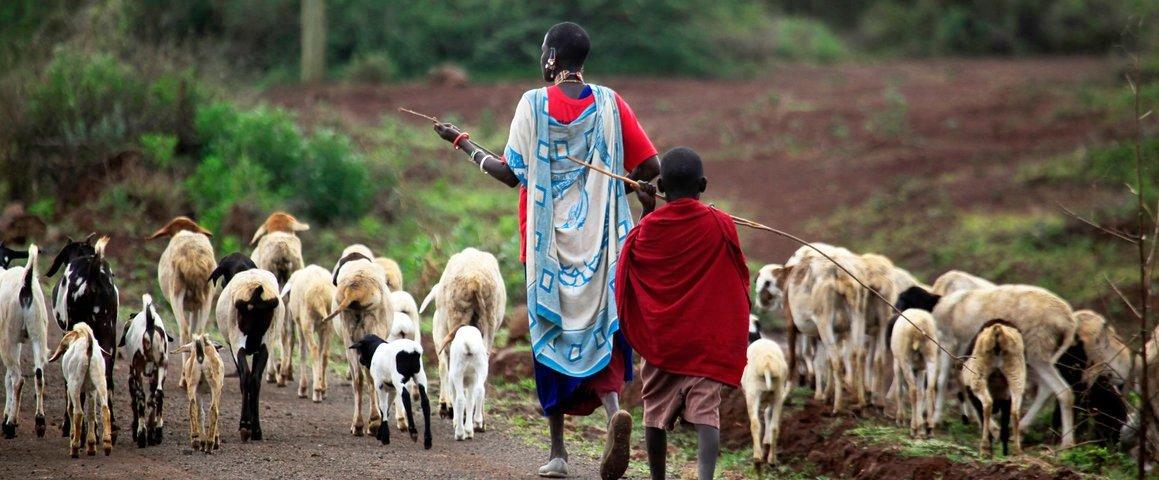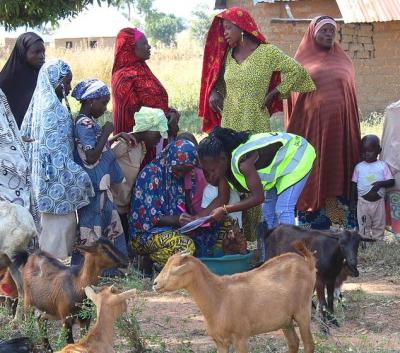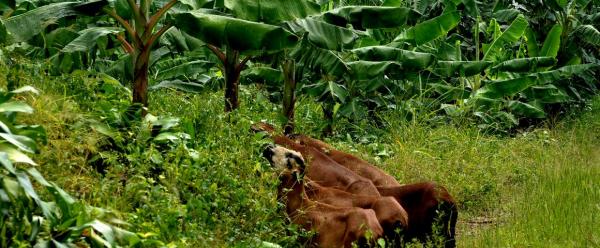Science at work 19 December 2025
- Home
- CIRAD news
- News
- Eradicating peste des petits ruminants
CIRAD is working to eradicate peste des petits ruminants

Kenyan goat herders | AdobeStock, T. Morozova
In 2011, rinderpest was officially declared to have been eradicated. That success – the first for an animal disease – was the fruit of a global plan launched by FAO and the World Organization for Animal Health (WOAH), to which CIRAD contributed. The focus is now on peste des petits ruminants (PPR), with an international plan to eradicate it by 2030. CIRAD is again heavily involved.
"We began by developing a vaccine and diagnostic tests in the 1980s", says Arnaud Bataille, a virologist at CIRAD and WOAH and FAO expert on PPR. "There are now more than 20 CIRAD researchers working on monitoring and control. As a reference laboratory for the disease for the European Union, FAO and WOAH, our role is to standardize diagnosis protocols, support national laboratories and characterize the disease better."
A disease that is devastating for rural people
PPR is a viral disease caused by a morbillivirus, like rinderpest. It affects a large number of wild and domestic ungulates (hoofed animals) in Africa, Asia and the Middle East, as far as the steppes of Mongolia. “In those regions, it is the most serious, widespread disease on goat and sheep farms” Arnaud Bataille points out. The mortality rate is between 30 and 70%, and even up to 90% in some cases.
“The disease has devastating consequences for rural people in the global South, for whom small ruminants are a vital resource, and particularly women, who often manage herds”, says Alexandre Caron, a health ecologist at CIRAD specializing in wildlife/livestock/human interfaces.
How does wildlife spread the disease?
“The role wildlife plays in spreading the disease is a major research topic we have been looking into for some time” Arnaud Bataille explains. However, the situation varies from one place to another. There have never been any deaths among African wildlife, except in zoos, whereas thousands of Mongolian saiga antelopes died from PPR in 2016-2017. The researcher sees the disease as “a real threat to biodiversity in Asia”.
If it transpires that wildlife is a reservoir, this could trigger a re-emergence of the disease once it has been eradicated. Wild small ruminants also serve as sentinels. “When rinderpest was eradicated, wild animals were not vaccinated. Instead, we monitored wildlife to ensure that the virus was not circulating”, Alexandre Caron explains. “Wildlife could play the same role for PPR.”
Screening tests are not effective in wild ruminants
CIRAD scientists recently published new results concerning the reliability of current diagnostic tests. Elisa-type serological tests were developed for domestic animals, and are not robust when used on wildlife. “They give a lot of false negatives and can also give false positives for animals infected with other morbilliviruses”, says Vladimir Grosbois, an epidemiologist at CIRAD and the study’s lead author.
The scientists re-analysed samples collected during the rinderpest eradication campaign in Africa between 1994 and 2007: 2570 samples in total from 48 wild taxons. This type of retrospective work was a first, but is proving crucial to the new efforts to eradicate PPR.
“Our results show that using these diagnostic tests on wild ungulate populations may even be counter-productive”, Vladimir Grosbois adds. There are effective ways of monitoring and tracking the disease in domestic animals, but to succeed in eradicating it, it is vital to monitor wild populations too.
Improving diagnostic tests
To this end, CIRAD is working to develop a reliable diagnosis procedure for use on wildlife. The first step is to check the robustness of the existing tests developed since 2010 by CIRAD and Innovative Diagnostics. “Thanks to work done recently, we now know for sure that the available Elisa tests are robust when used on swine and camelids”, Arnaud Bataille observes.
Another line of work is developing new tests. “As a reference laboratory for the EU, WOAH and FAO, we are working to develop non-invasive methods that are easier to use and cheaper”, the researcher adds. Various paths are being explored, such as detecting antibodies and viruses in saliva, faecal matter or water. In 2019, for instance, scientists demonstrated the efficacy of a new method for detecting the virus in faecal samples.
These uncertainties about PPR circulation and detection will not prevent the launch of an eradication campaign, but will have to be cleared up to optimize post-vaccination surveillance strategies.
Local people will be in the frontline of surveillance efforts
The last step will be to ensure that eradication operations are fully efficient. »We are working with local people to improve surveillance and monitoring strategies” says Arnaud Bataille. The EU LIDISKI project in Nigeria is training local players to recognize the symptoms of PPR and vaccinate small ruminants. Since the vaccine is heat-sensitive, the logistics have also been improved by installing solar panels to power refrigerated storage facilities.
The development of a new-generation vaccine under the EU SPIDVAC project is another example. The current vaccine, which was developed in the 1980s by CIRAD and the Pirbright Institute, does not distinguish between vaccinated and infected animals. “This information is vital in order to monitor the efficacy of eradication in affected countries”, Arnaud Bataille affirms. “Moreover, countries not affected by the disease cannot vaccinate their animals, since they could then no longer prove that PPR is not circulating.” The aim is to develop a vaccine that would allow this, using a marker that would trigger a specific antibody response in vaccinated animals.




























